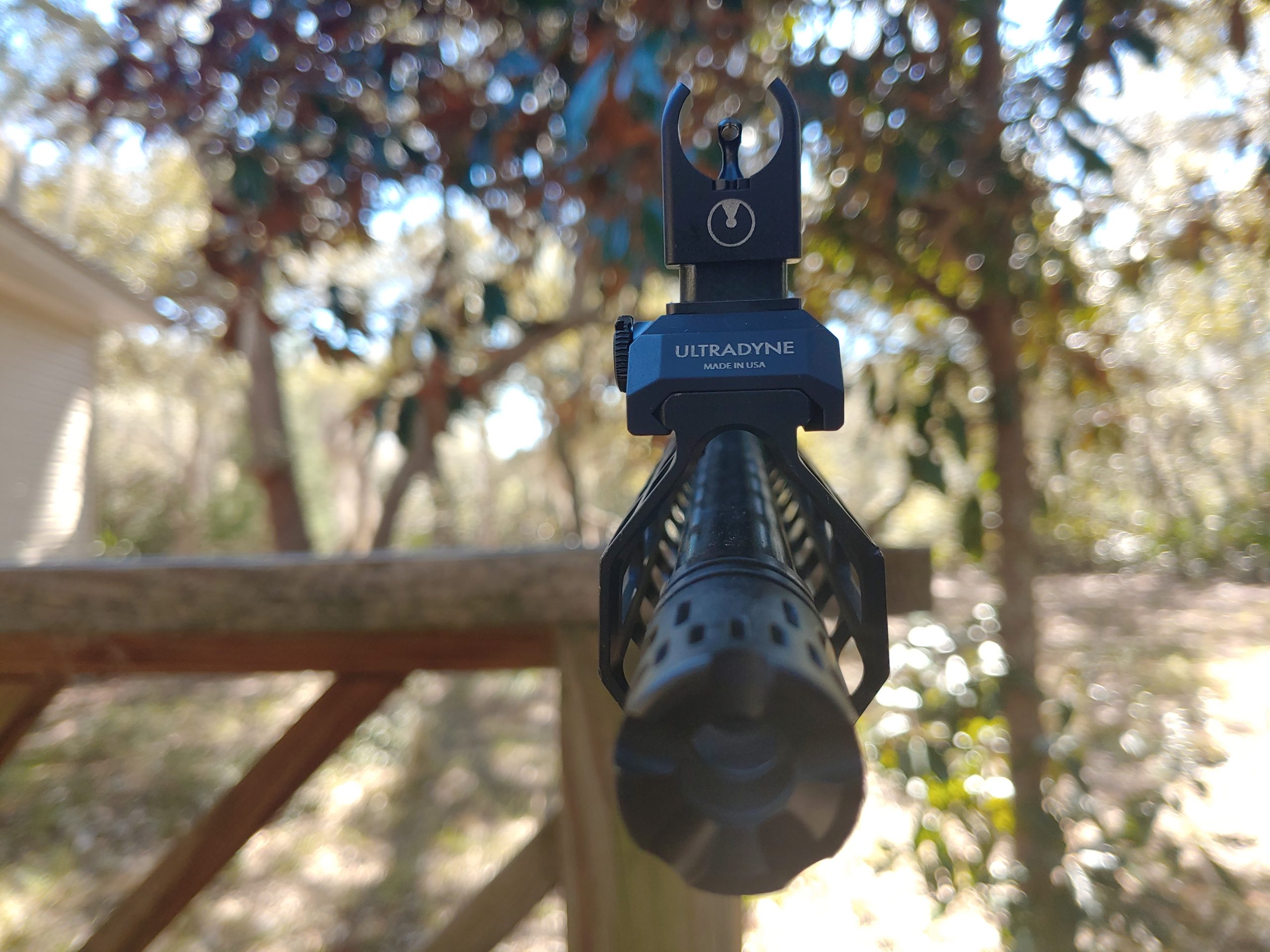Folding iron sights isn’t something a lot of us spend a lot of time thinking about. Pop ’em on, zero them, and you might likely never need them again. Optics have never been tougher and never been more prevalent than now. Folding sights, often called BUIS or backup iron sights, come from a variety of companies, but Ultradyne might make the best folding sights on the planet. Today we are taking a peek at the Ultradyne C4 iron sights and explaining why they might be the best iron sights you’ve ever heard of.
Breaking Down the Ultradyne C4 Sights
The Ultradyne C4 sights look pretty stock standard for BUIS. It’s not until you take a closer look at the Ultradyne C4 sights that you realize that these are something entirely different. Before we dive into anything too crazy, let’s examine the sights themselves. They aren’t polymer, made from steel instead. The front sight is made from 416 stainless steel, and the rear sight is made from 4140 CrMo steel, and both have a salt nitride finish.
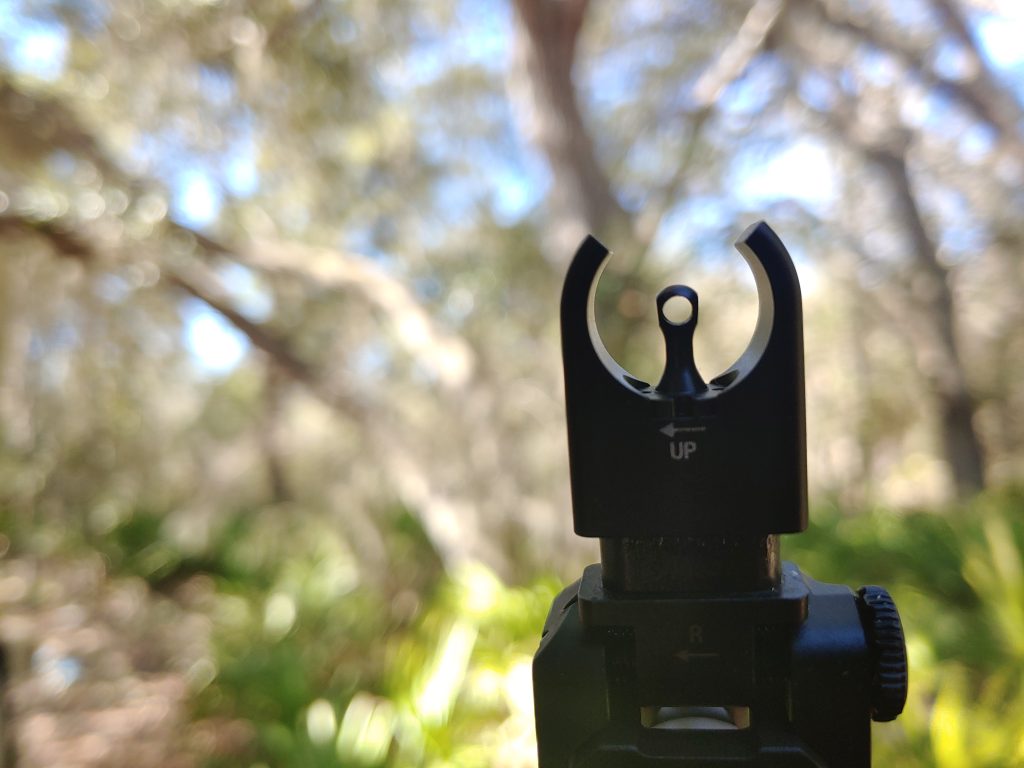
Advertisement — Continue Reading Below
The rear sight has an interesting design that’s not too wild. The rear sight is a threaded ghost ring with a .70 insert. You can remove the insert to have a massively wide rear sight, or you can purchase a .50 insert that provides a tighter, more precise sight picture. Ultradyne equipped the rear sight with a BDC set for a 55-grain projectile moving at 3,200 FPS.
A dial allows you to adjust the settings from 200 to 600 yards that coincide with that zero. Obviously, different barrel lengths, projectile weights, and calibers will change the maximum range, but zeroing it for any caliber won’t be a huge issue.
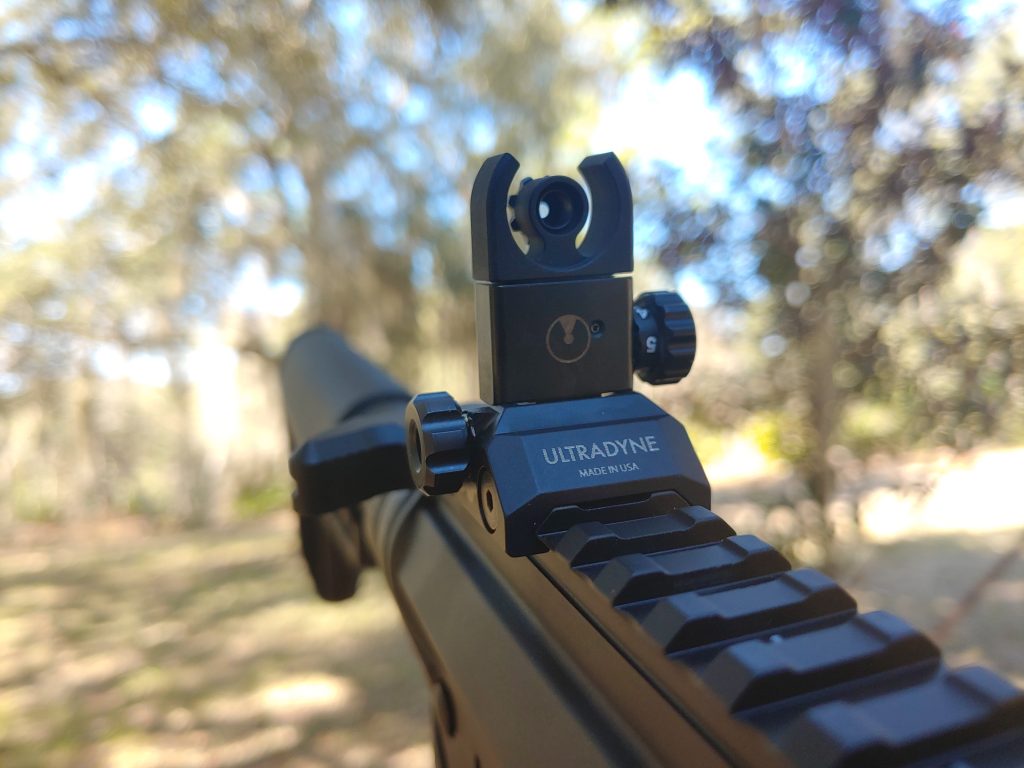
Advertisement — Continue Reading Below
The front sight is where things get a little crazy. How crazy can sights be? Well, what if we replaced your normal front sight post with another aperture? Yep, the front sight also has a hole through it. This concentric iron sight setup allows you to look through two apertures to see your target while aiming at it. The front sight can be adjusted for elevation like any other front sight, but also for windage to ensure the apertures remain concentric.
That Crazy Front Sight
The aperture included with your front sight is a simple 12 MOA aperture. You can go tighter or wider depending on your task. Obviously, you can also use a simple blade front sight post. However, you can also dial in an 8 MOA, 10 MOA, or even 14 MOA front sight.

Advertisement — Continue Reading Below
Tighter apertures make it easier to dial for superior accuracy, whereas the larger aperture gives you speed. 12 MOA seemed just right for me. I still prefer optics over iron sights, and if I switch to iron sights, it’s likely within a few hundred yards. I also know my limits and skills, and that guides most of my choices.
Editor’s Note: For reference, the M4A1’s (14.5″ barrel, carbine gas system, standard front sight gas block) front sight is about 16 MOA wide, and you can’t see through it. The M16 (20″ Barrel, rifle length gas system, standard front sight gas block) is about 11 MOA covering 19 inches at 150m.
Does It Make a Difference?
The Ultradyne C4 sight setup is brilliant. It’s super easy to use, easy to zero, and very well made. These aren’t just some gimmicky set of sights with a fancy trick. They are extremely well made. Adjustments are easy to make. They fold easily enough and flip-up easily and quickly. If they were just standard iron sights, I’d already be impressed.
Advertisement — Continue Reading Below
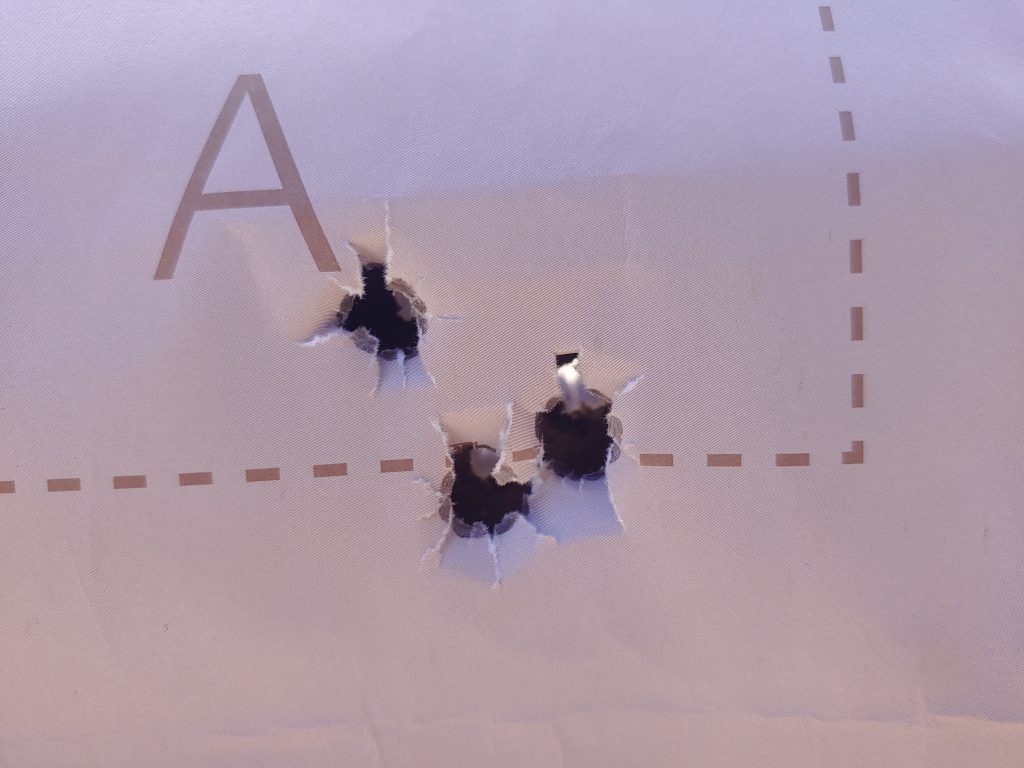
However, that little extra pushes them right over the edge. The concentric apertures work brilliantly. With proper alignment and zeroing, they allow you to easily engage at a wide variety of ranges. One of the big benefits of red dots is target focus. Target focus allows you to watch your threat instead of focusing on the front sight. Target focus grants better situational awareness.
The C4 sights are the only iron sights that I know of that allow you to have more target focus. Line up the sights, and you can watch the target. As long as your circles fall onto the target, you know you’ll hit that target. This makes quick, close quarters shooting rapid and easy to accomplish. Is it as fast as a red dot?
Advertisement — Continue Reading Below
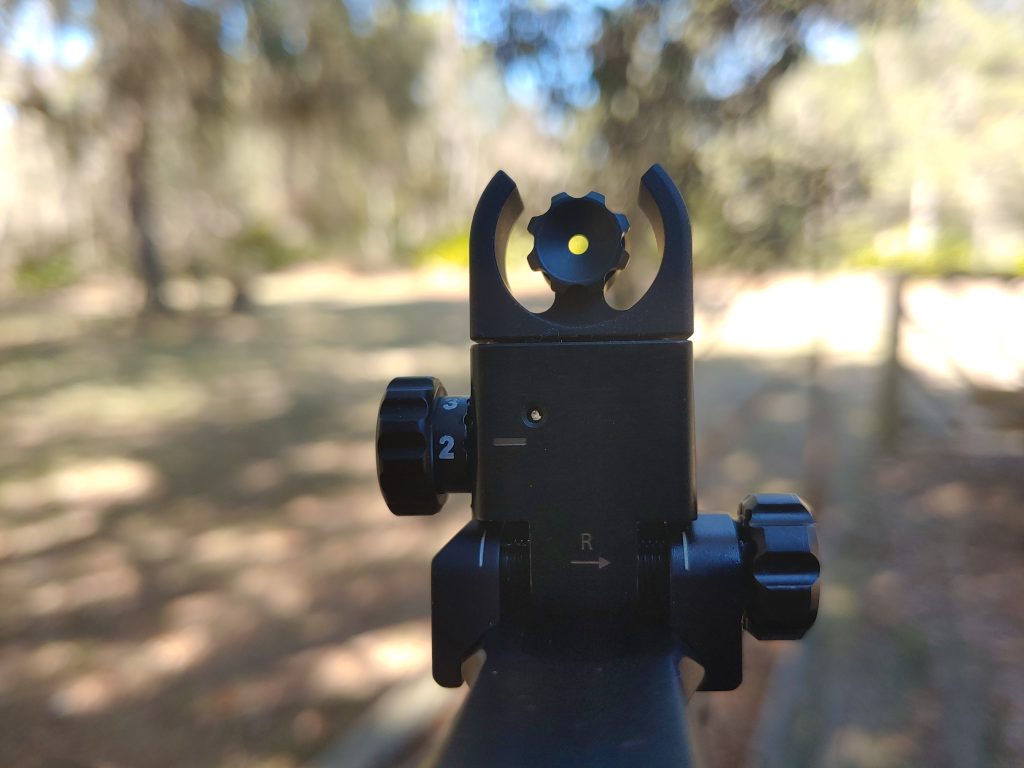
Well, not quite, but it’s a fair bit faster than standard iron sights. In fact, the only set of iron sights that might be faster than the Ultradyne C4 sights is a shotgun bead.
What About Longer Ranges?
The big and quick adjustments make it easy to adjust for longer ranges, and that’s a huge plus. You can dial up your range quickly, especially if you know your holds and engage easily enough. What I like is the ability to see through your front sight and actually see the target. Plenty of “I qual’d with iron sights’ guys know the pain of seeing a target at 500 yards with irons. The front sight mostly covers the target.
Advertisement — Continue Reading Below
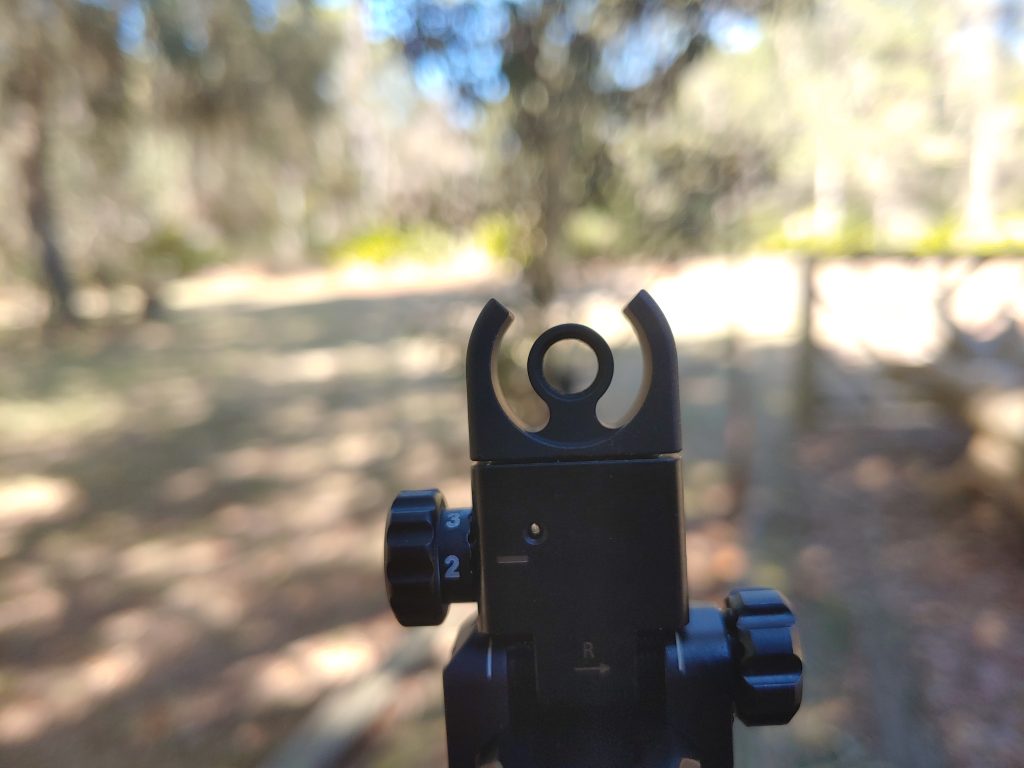
This isn’t an issue with the Ultradyne C4 sights. I can see through the front sight and see the target. At my 100 yard home range, a front sight won’t cover a man-sized target. However, at 100 yards, the iron sight would cover up a 4-inch gong, right?
Yep, so that was my target. I set up with a little bench a backpack for stability and sighted in on the small gong. It’s bright orange, and I could easily see it inside the front sight. I held it center, applied the best fundamentals I could, and heard more dings than not.
Advertisement — Continue Reading Below
The gong moving and some slight impatience ensured I had a few misses. I had to slow down, wait for it to slow down before I hit it with follow-up shots. On man-sized targets, it’s stupid easy to put the aperture in the center of his chest and let loose at 100 yards in a standing, off-hand position.
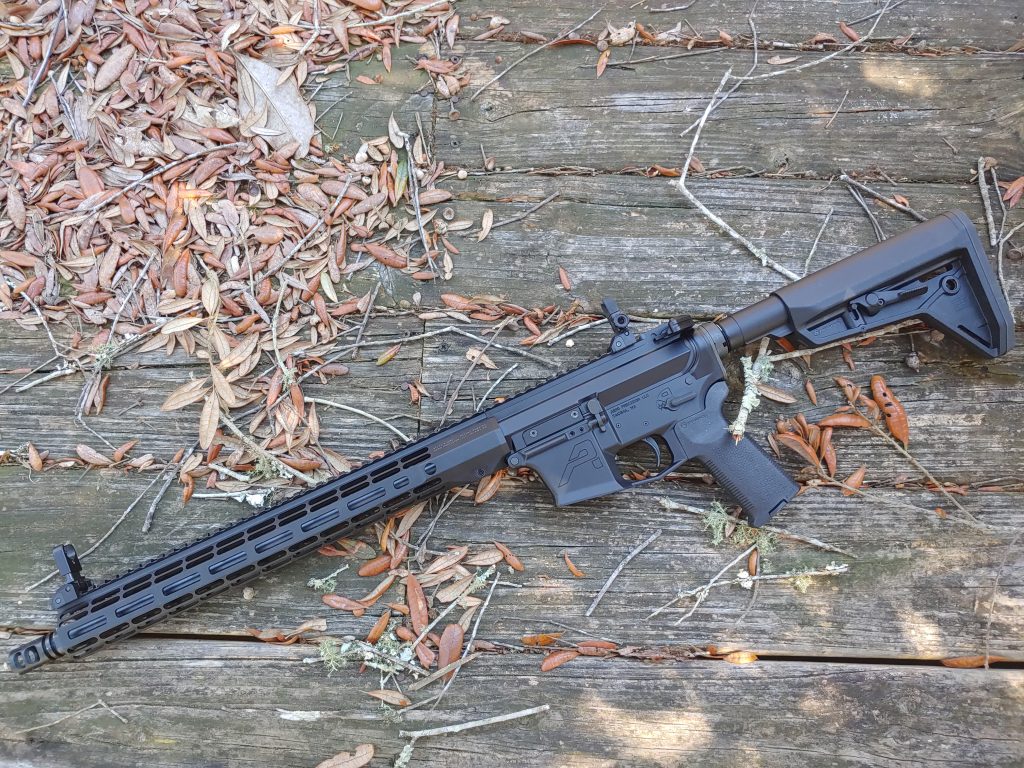
Hell, it’s easy to transition rapidly from target to target at this range and engage with awesome precision. I did a drill where I shot the gong and rapidly transitioned from the gong to the man-sized target and performed a hammer pair to the chest.
Advertisement — Continue Reading Below
The Ultradyne C4 Sights – In Living Color
The only real downside I found was shooting from a bright environment into a shaded environment limited the use of seeing through the aperture. However, in this situation, it still works as any standard iron sight would. It takes a real low-light situation to challenge the 12 MOA front sight, but I’d imagine the tighter models may be more sensitive to this effect.
Other than that, I can say these are the best iron sights I’ve ever used. The concentric apertures are ingenious and very easy to use at both close and long-range and grant a tough-to-beat sight picture. That’s not even mentioning how well they made are. It’s an impressive feat and a rock-solid set of iron sights. Check ’em out here.
